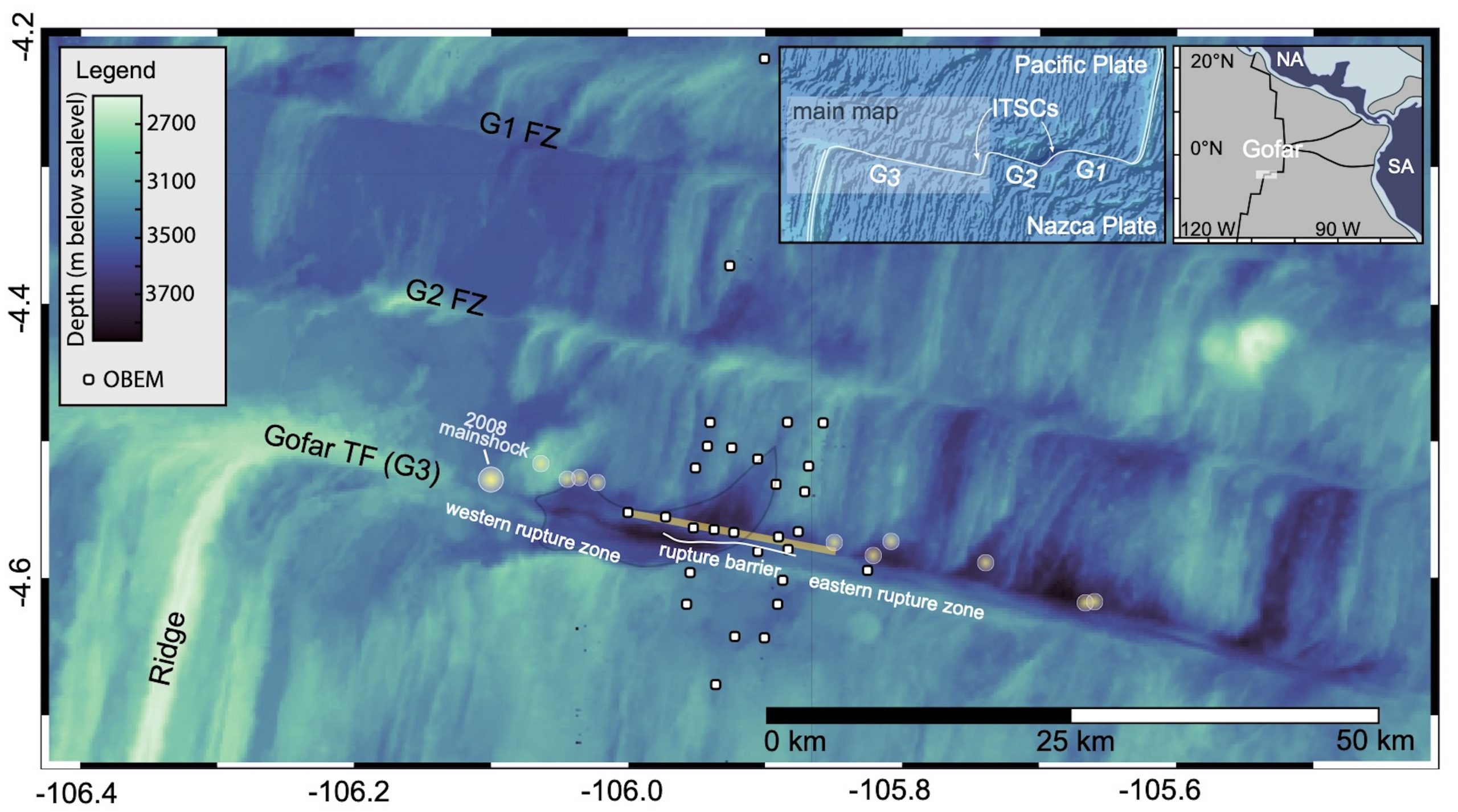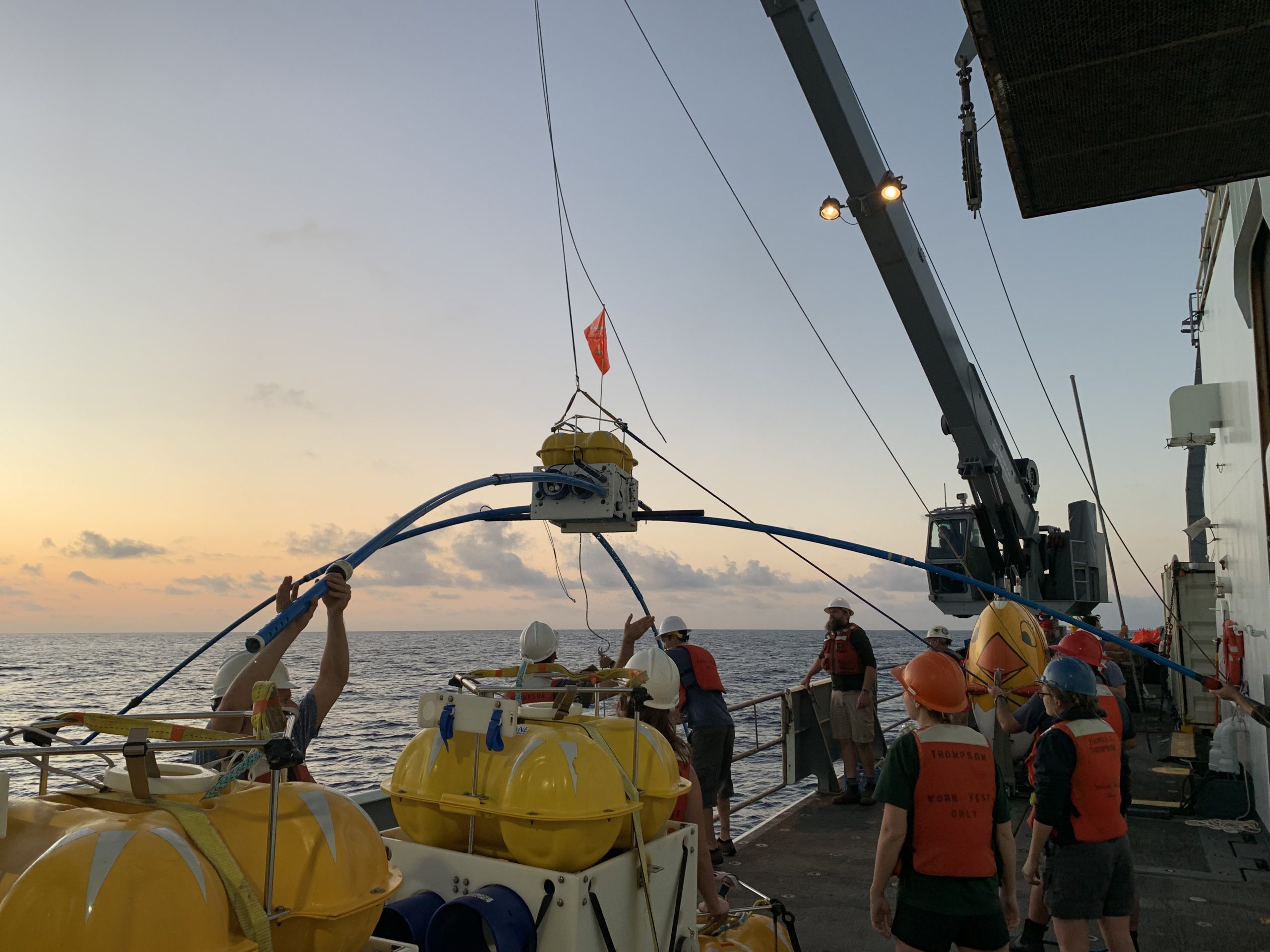Gofar Transform Fault
Our group most recently visited the Gofar Transform Fault, which is way out in the middle of nowhere on the East Pacific Rise.

Check out this article published by Boettcher et al. in Eos if you're curious about the logistics of studying a fault in the deep ocean.
The Gofar isn't a special fault. It's not near any large cities, it's geologically simple, it doesn't produce particularly large earthquakes, and there are other faults like it throughout the world's oceans. But this is exactly why scientists have been traveling to there for several decades. It is used as a 'natural laboratory', where we can learn things about transform faults that we can extrapolate to other oceanic faults and to more complicated and more dangerous faults on land. Several factors make the Gofar easy to study. The surrounding oceanic lithosphere has a relatively simple thermal structure and material properties, and the fault has a short (~5-6 year), semi-regular earthquake cycle, meaning that we have geophysical measurements spanning multiple cycles.
Seismologists have observed that the magnitudes of earthquakes on the Gofar vary from one part of the fault to another. Two patches of the fault, spanning tens of kilometers each, rupture semi-regularly in M ~6 earthquakes. These patches are separated by a region that produces only small (<M4) earthquakes and slips aseismically. This section of the fault, called the 'rupture barrier', also stops the propagation of large earthquakes nucleated on the adjacent sections. This behavior is analogous to locked and creeping patches observed on continental transform faults such as the San Andreas Fault, which have important implications for earthquake prediction in densely populated areas.
In 2022, we participated in a multidisciplinary research cruise aimed at determining what properties of the Gofar fault contribute to this variation in rupture behavior from section to section. The width of the damage zone, fault lithology, and pore fluid content/pressure have all been proposed as potential factors preventing the rupture barrier from nucleating large earthquakes.
Electromagnetic methods are extremely sensitive to fluid content because seawater is much more conductive than typical oceanic rock (basalt or peridotite). So, we conducted Vulcan, CSEM, and MT surveys to assess the fluid content at a range of depths around the rupture barrier. High porosity in the seismogenic zone could inhibit locking by relieving effective normal stress on the fault, or by altering the fault zone to materials that promote slip at low stresses.
Both the CSEM and MT surveys provide evidence for fluid circulation throughout the crust and potentially extending into the upper mantle along the transform fault. Our data reveal high conductivity within the lower crust on the southern side of the fault, likely indicating the presence of saline brines and possibly a small melt fraction. We believe that melt suctioned into the transform from the adjacent spreading ridge may provide a heat source to drive differential fluid infiltration deep into the crust south of Gofar, promoting aseismic creep. The high conductivity may also reflect deep fluid circulation altering upper mantle rocks to conductive minerals such as magnetite, which have perhaps precipitated onto a connected network of faults.
These datasets provide novel insight into the structure of an oceanic transform fault. The pronounced conductivity contrast between the Pacific and Nazca plates on either side of the Gofar highlights unexpected complexity and heterogeneity in this fault system. We also hope the constraints our models provide on the fluid content throughout the fault zone can be integrated into models of fault rupture behavior. Keep your eyes out for publications on this research coming soon!

Collaborators
Margaret Boettcher (U. New Hampshire)
Emily Roland, Andrew Gase, (Western Washington University)
Jessica Warren (U. Delaware)
Wenyuan Fan (SIO)
Jianhua Gong (Indiana University Bloomington)
Mark Behn (Boston College)
Jeff McGuire (USGS)
Research Papers
- Evidence for crustal brines and deep fluid infiltration in an oceanic transform fault (Science Advances)
- Crustal brines at an oceanic transform fault (WHOI press release)

